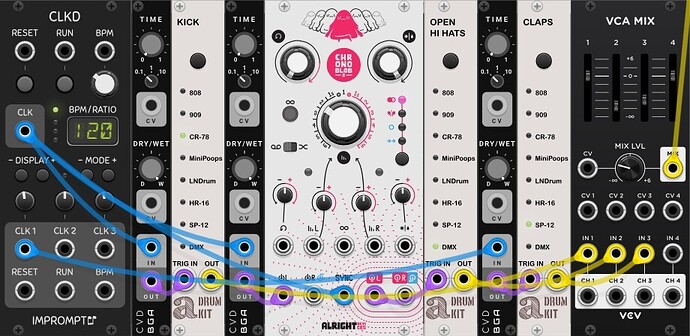Basic drum beat: Kick, off-beat hihat and clap
Basic drum beat w. kick, off-beat HH and clap_20240420.vcvs (8.1 KB)
This one is very basic, but for some reason it took me some time to nail it the way I wanted it. Replace drum modules with any sounds/samples. Chronoblob 2 (Alright) to create the clocked off-beat offset for the hihat. Adjust the Time knobs in CVD (Bogaudio) to change timings and groove.
